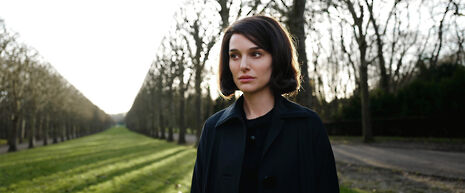Review: Life after death with ‘Jackie’
Alex Izza finds that Natalie Portman dominates and emulates in Pablo Larraín’s latest production

“I didn’t want to be famous, I just married a Kennedy.” This line from Jackie Kennedy (played by Natalie Portman) highlights the profoundly human nature of this film from Pablo Larraín. Set largely in the aftermath of the assassination of President John F. Kennedy on 22 November 1963, the film revolves around how Jackie Kennedy channelled her grief into ensuring JFK’s White House would become an image of pristine perfection.
Portman’s performance is the heart and soul of this movie. Hers is a startlingly accurate realisation of Jackie Kennedy for the screen. It is worth listening to interviews with Kennedy to appreciate the specificity of Portman’s Oscar-worthy performance, evoking the voice of this iconic woman down to the subtlest intonations. Portman crafts a riveting multi-faceted performance. As she arrives in Dallas, Portman’s appearance slides back and forth between the refined charm and poise of the First Lady and an uncertainty bordering on fear, conveying the terrible toll public perfection takes on the human spirit.
“Larraín presents the constructed nature of the mythos of JFK – the film itself becomes a subjective ‘truth’ to be defined by Portman.”
Portman’s leading role is complemented by a strong supporting cast. Peter Sarsgaard in particular shines as JFK’s brother Robert Kennedy. His interactions with Portman are the highlights of the film, as the brother and wife of the dead negotiate the emotionally fraught path of grief. In one magnificent scene in a White House ballroom, Sarsgaard’s façade of calm bursts forth in a wave of devastation, bemoaning a legacy of the Kennedy’s as nothing more than America’s “beautiful people”.
Larraín treats grief with the solemnity it deserves in this narrative of loss. Upon returning to the White House from Dallas, Portman is left alone, sobbing, and covered in blood. The viewer is engulfed in this suffocating emotional breakdown, reinforced by lingering shots of Portman’s blood-smattered clothes. Mica Levi’s soundtrack acts as the haunting backdrop, with its jarring refrain filling a void of meaning that words alone would not do justice. A scene of Portman striding across a rain-soaked graveyard is elevated by Levi’s discordant crescendos into a terrible moment of crisis about the proper place to lay JFK to rest. When combined with long silences between notes, Levi strengthens the unsettling isolation of Portman’s portrayal.
Jackie is ultimately a film about legacy. It is framed by a real interview Jackie Kennedy gave with Life magazine’s Theodore White a few weeks after JFK’s assassination. As Portman recalls the aftermath of the tragedy, events are filtered back through the ‘present’ of the interview. When asked if he could record a particularly revelatory anecdote, Portman simply states: “No, because I never said it.” Through the prism of the interview, Larraín presents the constructed nature of the mythos of JFK – the film itself becomes a subjective ‘truth’ to be defined by Portman. In Jackie Kennedy’s hands fantasy merged with historical fact. Through such spectacle, a human, idealistic, and deeply flawed president became a pinnacle of American greatness. The Kennedy White House became a ‘Camelot’ for the 20th century.
This film turns a well-trodden moment of American tragedy into a wholly singular work of art. Portman leads with a hauntingly majestic performance of a woman responding to a world turned upside down
 News / Fitz students face ‘massive invasion of privacy’ over messy rooms23 April 2024
News / Fitz students face ‘massive invasion of privacy’ over messy rooms23 April 2024 News / Climate activists smash windows of Cambridge Energy Institute22 April 2024
News / Climate activists smash windows of Cambridge Energy Institute22 April 2024 News / Copycat don caught again19 April 2024
News / Copycat don caught again19 April 2024 News / Emmanuel College cuts ties with ‘race-realist’ fellow19 April 2024
News / Emmanuel College cuts ties with ‘race-realist’ fellow19 April 2024 Comment / Does Lucy Cavendish need a billionaire bailout?22 April 2024
Comment / Does Lucy Cavendish need a billionaire bailout?22 April 2024





